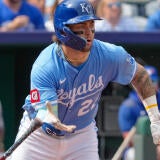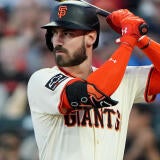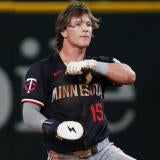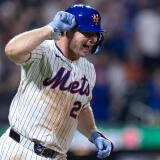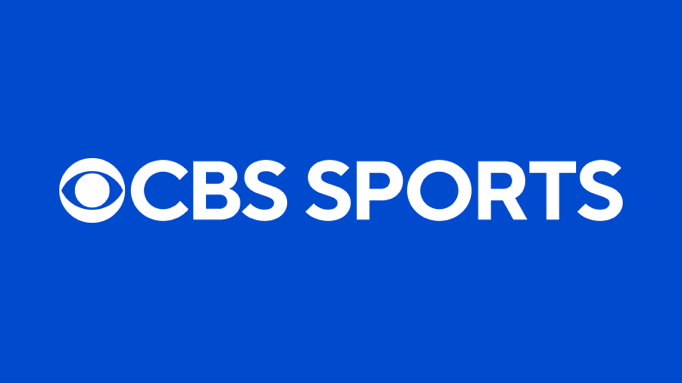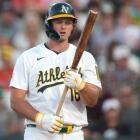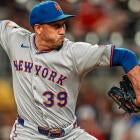The toughest players to rank at first base for 2026: Nick Kurtz listed among a loaded field of power bats
From rising stars to proven sluggers, Chris Towers examines the depth at first base for 2026

Nick Kurtz is going to be the No. 1 first baseman in Fantasy drafts in 2026. Maybe not in every single draft, but I bet it'll be most of them. And it's not that hard to come up with the argument for it: As a 22-year-old rookie, he has already been one of the best hitters in baseball this season, putting together a .298/.392/.628 line in his first 105 games with a .428 wOBA, bested only by Aaron Judge. He's doing that while posting incredible batted ball numbers and improving as the season has gone on – most notably by cutting his strikeout rate to 25.9% in the second half. Oh, and he's playing in a ballpark in Sacramento that looks like it might be second to only Coors Field when it comes to helping hitters.
Hey, I get it. To be this good this young is incredibly impressive. He's going to singlehandedly carry many Fantasy players to championships. He's been unbelievably good, and if he finishes his rookie season at his current pace, he'll become just the sixth rookie in MLB history with a 1.000 OPS in at least 450 plate appearances. And, unsurprisingly, that isn't a list with many flukes: Aaron Judge, Albert Pujols, Ryan Braun, Ted Williams, and Bernie Carbo – okay, four out of five ain't bad.
It's totally defensible to rank Kurtz as the No. 1 first baseman, and I very well may end up doing just that. But I do think there's a pretty good chance he's going to end up not just the top first baseman but far and away the highest drafted one, and that's where I'm going to struggle. Because as good as Kurtz has been, it's not like we've never seen stretches like this from Vladimir Guerrero Jr. before – he had a 105-game stretch just last season where he hit .358/.421/.630 with 25 homers, 82 RBI, and 73 runs. That's pretty close to what Kurtz has managed so far this season, and it's not even the best stretch of Guerrero's career – he hit .322/.417/.644 with 34 homers, 85 RBI, and 83 runs in the first 105 games of the 2021 season.
That hasn't proven to be a sustainable level of play for Guerrero, but it obviously goes without saying that it hasn't proven to be sustainable for Kurtz, either. He hasn't proven he can't, of course, but it is worth noting that, as good as the underlying metrics are, they don't quite back up what he's done so far. His .388 expected wOBA is phenomenal, but he's also outperformed that mark by 38 points, the third-largest mark of any hitter. His home park should help in that regard – the biggest overperformer of xwOBA is his teammate, Jacob Wilson, and all hitters at Sutter Health Park are outperforming their xwOBA by 14 points collectively – but there's plenty of room for Kurtz to regress.
He may improve, too! Kurtz is just 22 years old and has already shown improvement as a rookie with his significant second-half plate discipline improvements. But you can also look at someone like Judge, a future Hall of Famer who had a comparable rookie season (in an even larger sample), who nonetheless took a step back across the board in his second season and didn't really get back to his rookie-season level of production again until his sixth season as a regular.
None of that is to say Kurtz is going to be a bust in 2026. It's not even to say he shouldn't be the No. 1 first baseman for 2026. I'm leaning that way myself with a couple of weeks left in the season. But it's to say that there's a decent chance he ends up being overdrafted in 2026, and probably should be grouped in the same tier as Guerrero, at least. I'll wrestle with myself over which of those two should be No. 1, but I think Scott White got it right in his attempt to predict the first two rounds for 2026 Monday when he let Kurtz fall to the second round and only had him seven spots ahead of Guerrero.
They'll likely be even closer than that for me, but the point is that Kurtz probably shouldn't be pushed into the first round when there are so many true five-category contributors. As good as he is, Kurtz is only guaranteed to be an impact bat in three of them, and you only have to look at someone like Matt Olson to see how much batting average can fluctuate for guys with huge power and big contact concerns. He could hit 50 homers next season, and I wouldn't be surprised; he could hit 35 with a .240 average, and I wouldn't be that surprised. It's a hard profile to make work every year, and there's a reason slugging first base types who don't steal bases rarely go as high as Kurtz is likely to.
Here are four other first basemen I'm struggling to figure out how to rank for 2026:
Matt Olson, Braves
Olson is trying to salvage his season-long numbers with a huge closing kick – he homered again Tuesday, his sixth in 13 September games after hitting six in 54 games between July and August. He's got a pretty good chance to finish with more than 30 homers for the fifth time in his career, though a return to either the 100-run or 100-RBI thresholds seems like a taller task with just 10 games to go. The .279 batting average is quite good – the second-best of his career to date – but it all feels sort of … un-impactful?
That's not literally true, as Olson is still a top-eight first baseman and top-50 hitter overall, but even that is a bit disappointing for a guy whose ADP was 34 coming into the season. He hasn't been a huge letdown, but he mostly hasn't been the kind of bat you paid for, and that's been true two years in a row. He'll be 32 shortly after Opening Day next season, too, which makes chasing the upside of 2023 feel like a mistake. He's still a very good starting first baseman, but probably not someone you need to chase aggressively. I think he might be in a tier of his own at first base for next season, between the six names who will probably all go in the top-40 picks and the likes of Vinnie Pasquantino and Tyler Soderstrom, who will be closer to 100th.
Josh Naylor, Mariners
As a hitter, Naylor has been fine. He'll get to 20 homers and 90 RBI with a very helpful batting average (.284 right now), which is a bit of a step back overall compared to last year, but not a tremendous one. Solely judged by what he's done with the bat, Naylor has probably been one of the 12 or so best 1B in Fantasy. But he actually ranks in the top five in Roto leagues thanks to his 27 stolen bases, and I just have no idea what to do with that. He already swiped a career-high 11 in just 93 games with the Diamondbacks, but he's managed to be one of the most prolific basestealers in the league since joining the Mariners, swiping 16 in just 44 games. Despite being one of the slowest baserunners in the league.
There's basically no precedent for a player as slow as Naylor stealing this many bases, and while he deserves credit for unlocking this part of his game, I don't think we can expect it to continue in 2026. It reminds me of Willy Adames' career-high 21 steals (also in a contract year) last season, which have regressed to 10 in his first season with the Giants. Naylor has been opportunistic, and maybe he'll just keep running like this, but I don't think you can count on that in 2026, so I'm ranking him around 10th at the position (albeit behind a couple of guys who you will more likely use at catcher than first base). But seeing him run like this means we can't just write off the possibility that he keeps doing it next season. Which could make him a very valuable pick if we just downplay that upside too much.
Yandy Diaz, Rays
It was another fine season for Diaz, with numbers that will end up pretty close to his 2023 breakout with a fraction of the hype. But there are a few things working against a repeat. For one, there's the fact that Diaz will turn 35 next August, and it's just asking a lot for any player to avoid a dropoff at that point. And then there's the question of where he'll be playing. The Rays are moving back to Tropicana Field after a year at George M. Steinbrenner Field, and that's a downgrade for Diaz, who has an .874 OPS in the Rays' current home park. He's more than held his own at Tropicana in his career (.846), but it is a downgrade.
But then there's this: With Diaz set to play on a $12 million option, there's a decent chance the always frugal Rays opt to move him this offseason. That's not necessarily a bad thing, but as we saw with Christian Walker this offseason, a change of scenery for a player this late in his career just injects another way things could go wrong.
Kyle Manzardo, Guardians
Through mid-August, Manzardo had started just seven games against left-handed pitchers, but he has started four of the past five over the past month. And that's ultimately what it comes down to. Do these recent starts against lefties mean the Guardians actually view him as an everyday player? I think they probably should. He has just a .281 wOBA against them, but his expected wOBA is .333, with decent power indicators and a manageable 26.2% strikeout rate. For most left-handed hitters, you're just hoping they can keep their heads above water against lefties while mashing righties, and what we've seen from Manzardo suggests he can at least do that. We're also talking about a very small sample size all around, including in his opportunities to start against lefties, so take it all with a grain of salt. But if it looks like the Guardians are viewing Manzardo as an everyday player coming off a season where he has 26 homers and counting in fewer than 500 plate appearances, I certainly think there's at least top-12 upside here. Maybe more than that. For now, I'm ranking him outside of the top 15, but it wouldn't take much to push him up by the end of the season.
And now here's what you need to know from Tuesday's games around MLB:
Tuesday's standouts
Connelly Early, Red Sox vs. ATH: 5.1 IP, 5 H, 1 ER, 0 BB, 7 K
The second start has been when the problems have started for a lot of the recent prospect call-ups, so it was nice to see Early overcome that hurdle. And he did it facing the same lineup in a row, which can be tricky – hitters tend to do better the more they've seen of a pitcher. He wasn't quite as dominant as his first start, but he more than held his own, generating 14 swinging strikes on 80 pitches against a righty-heavy lineup. It's only a couple of starts, but Early sure looks like one of the Red Sox's best three starts heading into the playoffs, and a serious breakout candidate for 2026 in Fantasy. By the way, that's now 18 strikeouts to one walk in his first two MLB starts.
Dominic Canzone, OF, Mariners: 5 for 5, 3 HR, 4 RBI, 4 R
Canzone has quietly had a really solid season as a specialist for the Mariners, hitting .296/.347/.484 against righties before his three-homer game. The problem, of course, is that he isn't even close to an everyday player, starting just seven games so far in September. As much as you would have liked to have this three-homer game in your lineup, there's no sense in chasing it. He might start a few games next week (the Mariners are only scheduled to face one lefty out of six games), but even that probably isn't enough.
Carter Jensen, C, Royals: 3 for 4, 2 HR, 1 2B, 3 RBI, 3 R
Salvador Perez's presence continues to be a limiting factor for Jensen, who started just his seventh game in September Tuesday. The Royals can shift Perez to DH or first base (or play Jensen at DH), but that means taking Jac Caglianone out of the lineup, and his long-term development remains a big part of what the Royals need to accomplish, too. But this game might shift things. Jensen hadn't looked overwhelmed in his first taste of the majors, but he hadn't done much beyond drawing a handful of walks before his explosion Tuesday. But this all comes at the end of a breakout season that has seen Jensen hit .290/.377/.501 as a 21-year-old across Double-A and Triple-A, so the two-homer game could be the start of him figuring it out. There's little Jensen could do over the final week-plus to play his way into the top-12 discussion for next season, but he should be on your late-round radar in two-catcher leagues.
Shohei Ohtani, Dodgers vs. PHI: 5 IP, 0 H, 0 ER, 1 BB, 5 K
The first thing to note here: The Dodgers said a few weeks ago that Ohtani isn't going to throw more than five innings in a start this season. That may change in the postseason, but at least in the regular season, this is part of the plan – and presumably a plan Ohtani agreed to beforehand. Still, it's hard not to be frustrated by this even before Justin Wrobleski came in for the sixth and immediately gave up five runs to spoil Ohtani's chance at a win. With 68 pitches through five innings, he was never going to get through the entire game to complete it, so it's a moot point, but still, it would have been nice to see him get a chance to keep it going. Ohtani ran into some trouble in mid-August, but has bounced back beautifully with one run in 13.2 innings over his past three starts, with 19 strikeouts to just four walks. He'll likely still face some workload limitations next season, but should get a long enough leash to at least have a chance to go six innings regularly, and will probably rank as a top-40 starting pitcher – and that might be underselling him.
Eury Perez, Marlins @COL: 5 IP, 1 H, 0 ER, 0 BB, 6 K
I've talked about it a lot lately, but this is another good example of why prioritizing what a player has done lately over their overall track record and talent level can lead you astray. Perez went through an absolutely brutal six-start stretch that saw him allow 22 runs over 25.1 innings of work, capped off by 12 runs over just 4.2 innings in combined starts against the Mets and Nationals, at which point I think every Fantasy player and analyst probably said some variation of, "You can't start him right now." So, of course, Perez has given up just three runs in 10.2 innings over his past two starts with 13 strikeouts and no walks. And it could have been even more if this start wasn't abbreviated by rain. Perez has certainly had his struggles this season, and I am by no means suggesting he should have been viewed as an obvious, must-start player in Fantasy. I am simply noting that my faith in his prodigious talent never wavered, and that recent trends have a lot less predictive value than we tend to think.
Michael King, Padres @NYM: 3 IP, 10 H, 8 ER, 0 BB, 2 K
You need to have a really good reason to steer away from a player's baseline talent level, in other words. Like, say, "they missed most of the past four months with multiple injuries (including a nerve issue in their shoulder). That's the case with King, who has thrown just 10 innings in three starts dating back to mid-May due to injuries. When he's right, King is one of the best pitchers in baseball, but given the time he's missed and how he has pitched (five strikeouts to three walks while allowing 12 runs in those 10 innings), I think it's reasonable to assume King just isn't right. He'll try to get back on track in whatever starts remain before he heads into free agency, and I'll probably mostly give him a mulligan for his late-season struggles when ranking for 2026. But I would feel a lot better about the prospect of that if he puts together a few starts where he looks more like himself.
James Wood, OF, Nationals: 0 for 5 with 4 K
Wood isn't a finished product yet. That much has become clear amid his second-half slump that has seen him hit just .214/.296/.340. And, unfortunately, things are getting worse, not better, as he has struck out 44% of the time in September after he was up to 36% in August. I don't know if he's just hitting the wall or if the book is just out on him – he's facing fewer fastballs in September – but I do think he's probably played his way out of first-round consideration for 2026. Especially since he has just 15 steals in 148 games after he stole 14 in 79 last season. It's to the point where I wonder if he's just playing through something – he dealt with quad tendinitis in the spring and has seen his sprint speed drop from 85th percentile to 60th percentile. Hopefully, there's some kind of explanation for this second-half collapse.
Cameron Schlittler, Yankees @MIN: 4.2 IP, 3 H, 4 ER, 5 BB, 6 K
This isn't the first time Schlittler has struggled, but it is the first time he's struggled with his command in the majors. And that's a good reason to mostly write it off. His cutter was up 2.4 mph in this one, which seems like a good sign that something was off for him – though the cutter did get some good results for him, interestingly. All in all, despite Schlittler struggling in two of his past three starts, I'm not too concerned about him either for the rest of the season or for next season. He's shown enough to be worth viewing as an end-of-rotation piece with upside for next season – though I'll admit to being a bit spooked by how much velocity he has added over the past year or so.
Ryan Pepiot, Rays vs. TOR: 1.2 IP, 4 H, 4 ER, 3 BB, 3 K
Given that Pepiot had his last start moved back due to fatigue, I'm not especially surprised that he struggled here. And that's enough to scare me off of him for the rest of the season for those of you still playing. However, I do want to note one thing: With the Rays likely returning to Tropicana Field next season, Pepiot has a decent chance to be on my breakouts list for 2026. He has managed to put together another solid season despite his four-seamer taking a step back from last season, and that bodes well for his chances of being even better in 2026, thanks to Tropicana's positive effect on four-seamer movement. It's one of the best strikeout parks in the majors, and any gains there could help Pepiot take off. Don't write him off as just a mid-rotation arm just yet.


